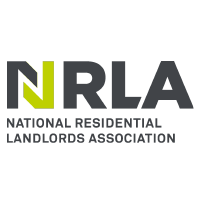
Keir Starmer’s suggestion that landlords are not ‘working people’ is mistaken, says NRLA Chief Executive Ben Beadle.
It’s depressingly familiar.
The tired rhetoric of the fat cat landlord living a life of luxury, paid for by their hardworking tenants.
We’ve heard it time and time again, but it was disappointing to hear it from our Prime Minister.
For those of you who have missed it, I will bring you up to speed.
In an interview this week Sir Keir Starmer told Sky News he would not consider someone who made income from property ‘a working person’.
Like you I was shocked. Like you I was incensed.
We just need to look at the Government’s own statistics to see why.
Official data shows that 30 per cent of landlords are employed full time, with a further 10 per cent working part-time; 28 per cent are self-employed in some way, while 35 per cent are retired and are likely to rely on their rental income for their pension.
It couldn’t be more categoric. We are working.
We are also not the ‘fat cats’ some elements of the media would have us believe, with almost 70% basic rate taxpayers. Read that figure again. 70%.
In my role as chief executive of the NRLA I travel the length and breadth of England and Wales, meeting our members and hearing your stories.
Our members come from all walks of life, but what unites you is a strong work ethic and a determination to do the right thing by your tenants.
Over my last four years at the helm, challenging stereotypes and preconceptions when it comes to landlords and the private rented sector has been one of my key objectives and slowly, slowly I felt we were turning the tide.
It is ill-thought through comments like this, that make me question that.
But since coming to power Labour has had much to say about the great work landlords are doing in providing vital homes to rent.
Indeed, Housing Secretary Angela Rayner, introducing the Renters’ Rights Bill, acknowledged the ‘important role of landlords, most of whom provide good-quality homes for their tenants’.
Being a landlord isn’t easy. It’s hard work.
Millions of families look to our sector for a home, satisfaction rates are high, and demand is growing.
Rather than stoking misconceptions, the Government needs to focus on the key challenge in the rental market, namely a lack of homes to rent to meet ever growing demand.
More information
- If you are a landlord who wants to do it right, why not join us at our annual conference in Birmingham next month. The NRLA’s annual Landlord Conference, on November 6 will offer a unique opportunity for property professionals to here from experts from across the industry, including keynote speakers Andy Burnham and James Caan . Tickets for the event, which will be held at Birmingham’s NEC, are selling fast, so to find out more and book your place, click here.
- In special recognition of our hard working landlords we’re offering £15 OFF membership. The offer can be redeemed this weekend only and is available to members and non members via our Refer a Friend scheme using promotion code WORKINGPEOPLE. If you successfully refer a friend during this period they will receive £15 off membership and you will get £15 off your next renewal.
Original Post: https://www.nrla.org.uk














